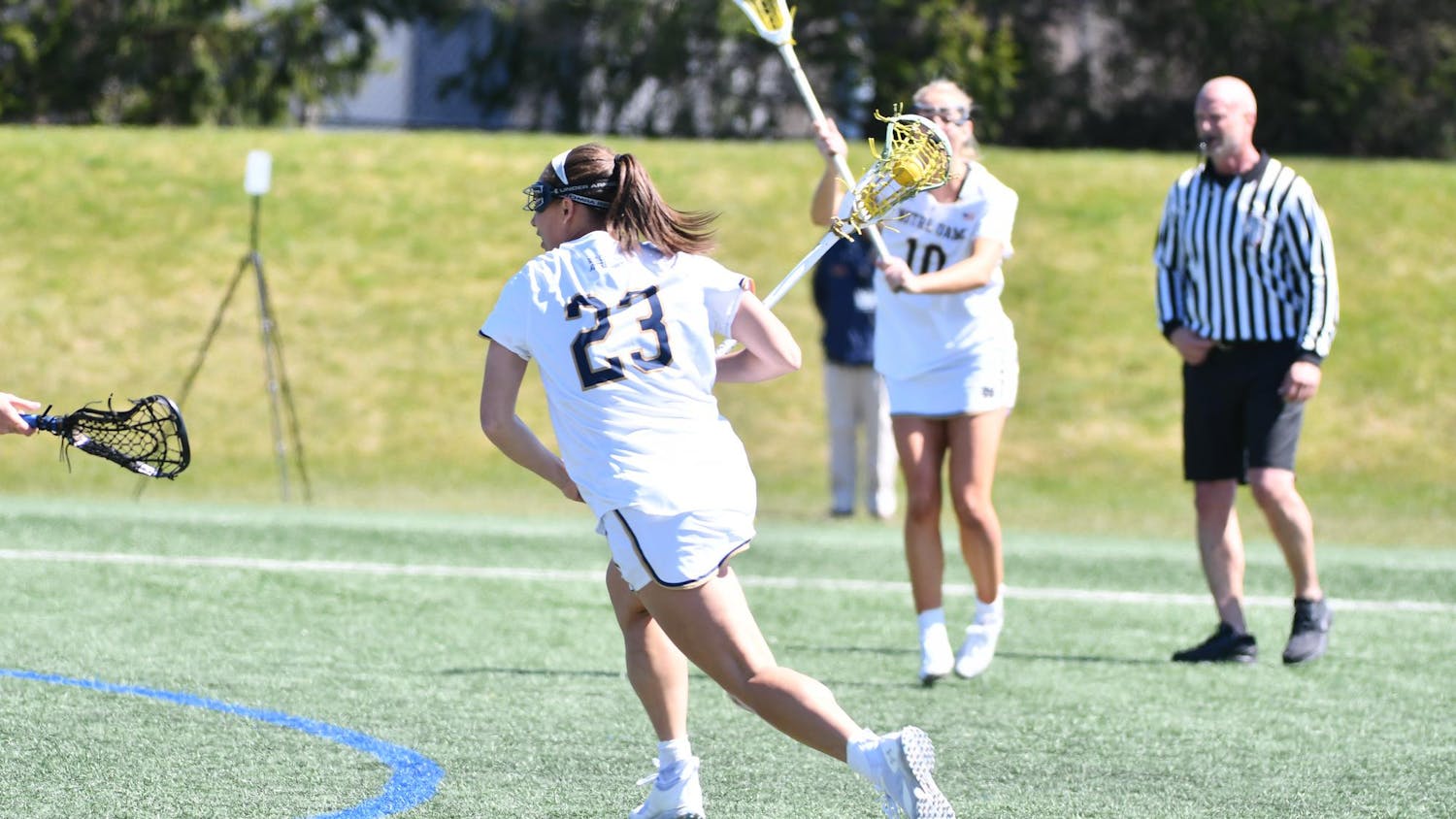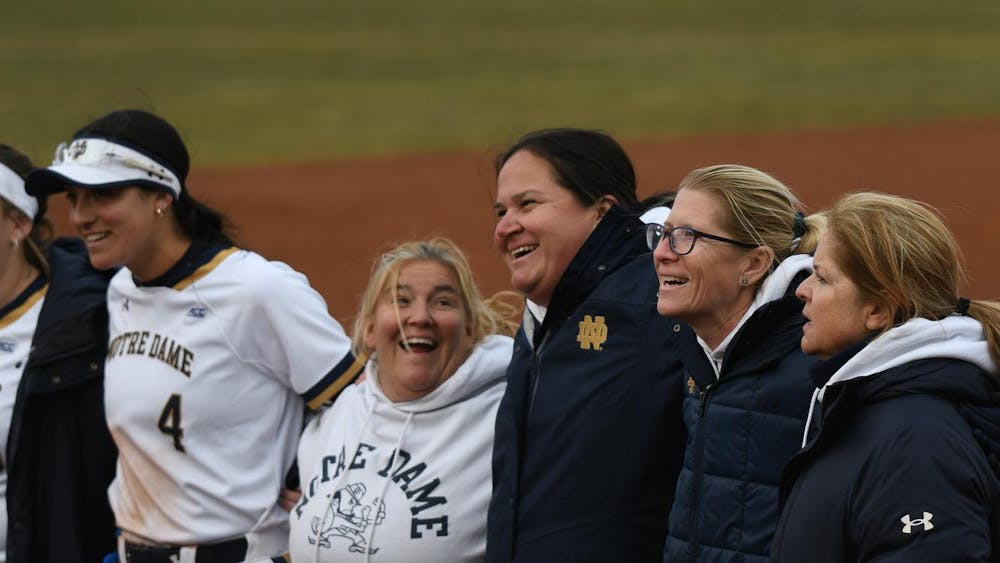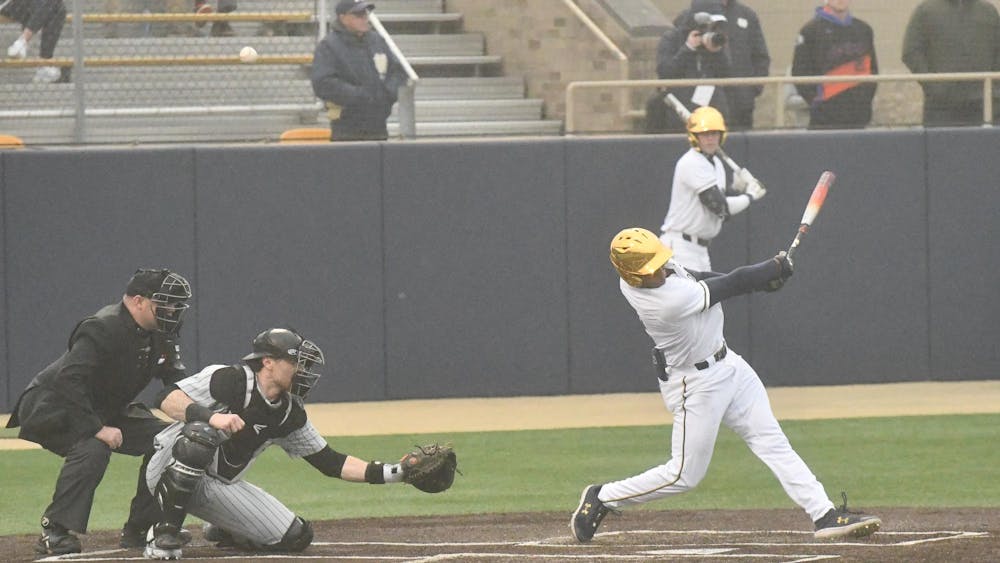Over the course of the past few years, I’ve become a fan of the WNBA. For the most part, it’s due to the large contingent of Notre Dame players making their mark on the league — most recently Lindsay Allen being drafted by my hometown team, the New York Liberty. But it seems to me that I’m one of the only ones.
WNBA players are some of the country’s best athletes — and without a doubt the hardest working, especially when you consider the fact that they reap almost none of the rewards that so many top athletes nowadays do. There is minimal fame and glory in being a professional women’s basketball player. There certainly isn’t any money in it.
Making money in sports comes down to endorsements and sponsorships — but one shouldn’t have to turn on the television and wonder which teams are playing because the team names aren’t visible on the uniforms, only Verizon and Draft Kings are.
This isn’t the fault of team owners or managers, however. In the WNBA, you’ve got to do what you’ve got to do to stay afloat. There’s simply no money in the sport. While women’s sports are on the rise in general, attendance and viewership has recently decreased for the WNBA.
Endorsements aren’t easy to come by for WNBA players, either. The league gets such limited television coverage and viewership that it doesn’t make sense for Nike and Under Armour to invest millions in an athlete whose return on investment will, more than likely, be minimal, especially when you consider the fact that women’s basketball players often get more publicity before they graduate college than when they are playing professionally. There are the rare, lucky few, including Skylar Diggins-Smith and Maya Moore, who snag multimillion-dollar deals after a stellar season. But most players have to survive without endorsements, which is hard to do for an athlete.
It’s appalling that WNBA players — professional players, all of whom were at the top of their respective collegiate programs and, unlike their male counterparts, almost all of whom earned their college degrees — do not make enough money in a single season to have an offseason. When the WNBA season ends, the vast majority of players move overseas to anywhere from Turkey and South Korea to Russia and Israel.
On top of playing a second full season for another team overseas, many of the higher profile WNBA players start foundations and youth camps. They travel the country teaching kids how to shoot and dribble. Again, some do it for the love of the game, but many have to do it because they cannot afford not to, seeing as in 2017, the average WNBA salary is just $51,000.
I’m not saying WNBA players should make the same amount each season NBA players do. The LeBrons and Kyries of the world definitely bring in more money than the Elena Della Donnes and Sue Birds of the world. It’s an unfortunate fact of life that the general population does not care as much about women’s sports as it does men’s sports.
But the 2016 NBA MVP Stephen Curry made $11.4 million last season. By contrast, 2016 WNBA MVP Nneka Ogwumike of the Los Angeles Sparks made just under $1 million and was the league’s top-earner in terms of salary. That just doesn’t seem right, no matter how the two leagues’ numbers run.
And the WNBA is not the only league to face these hardships. The LPGA has recently had to cut many of its events from full 72-hole events to 54-hole events to maintain television coverage — a major decision when seeing as a 72-hole event is an integral facet of a golf tournament the majority of the time.
It’s time for the world to wake up to the fact that, when it comes to the WNBA, we are surrounded by some of the best athletes in the world. We need to give the league enough appreciation and attention that these women can play with their team’s names emblazoned across their chests, as opposed to their team’s sponsors’.













